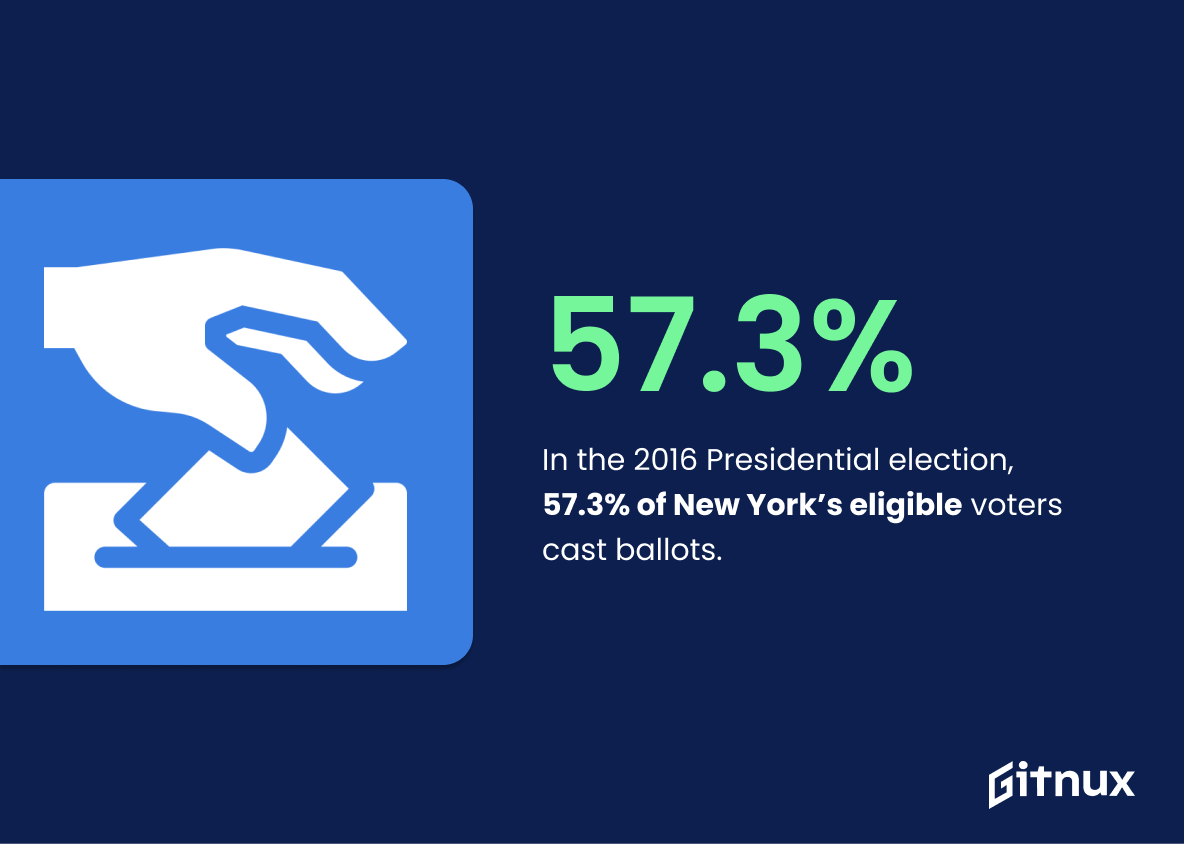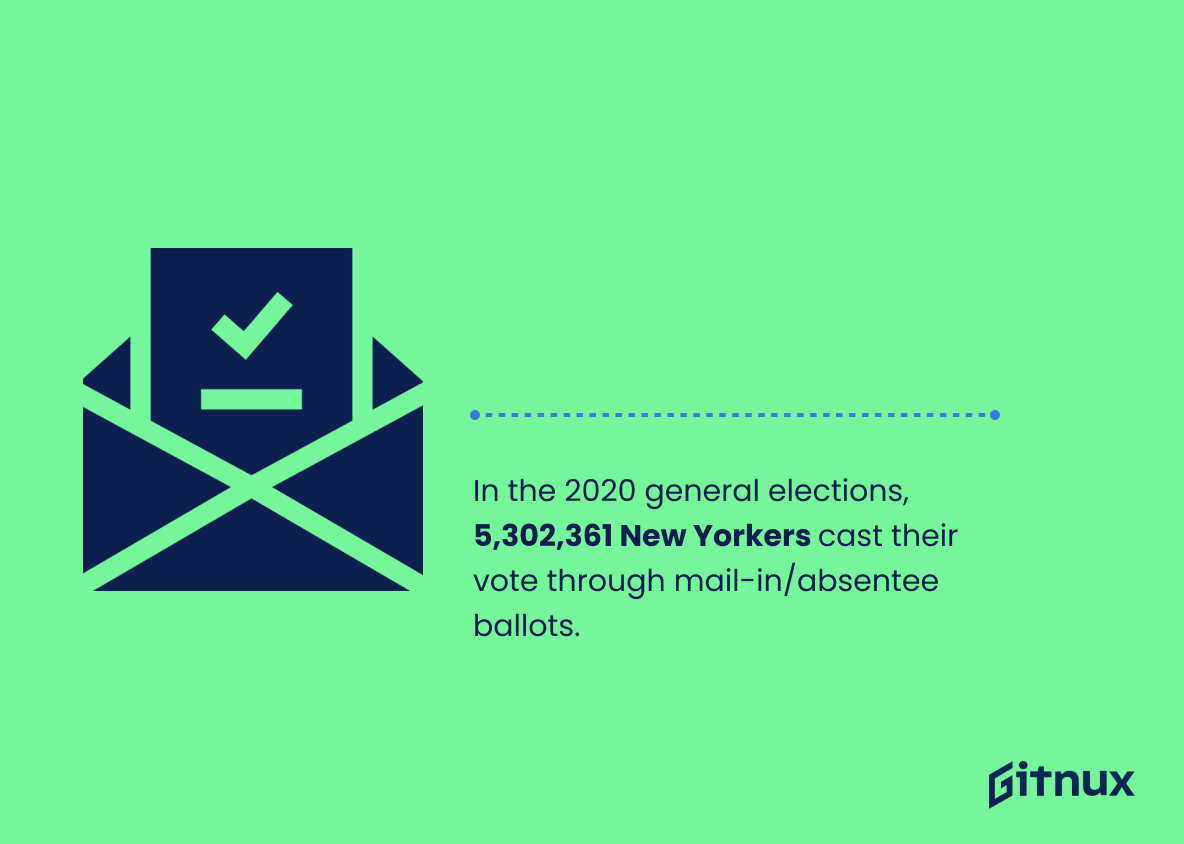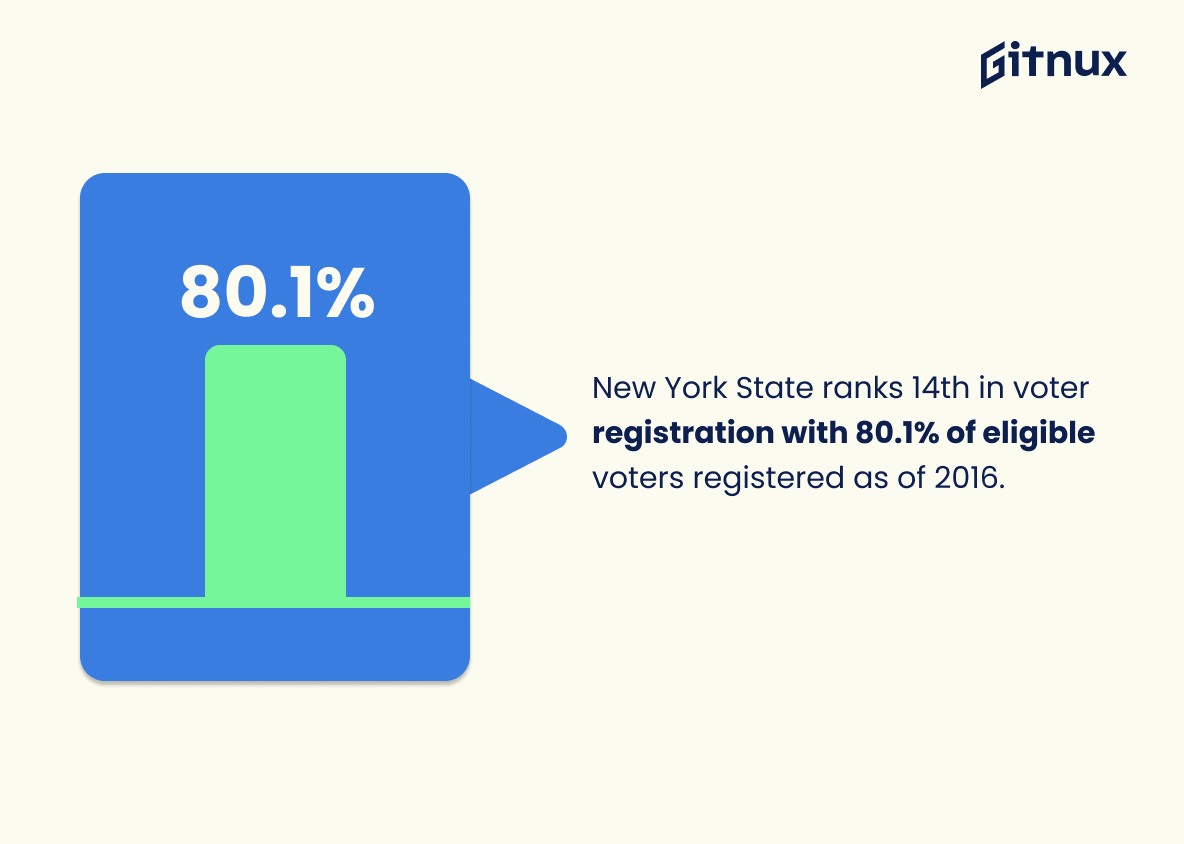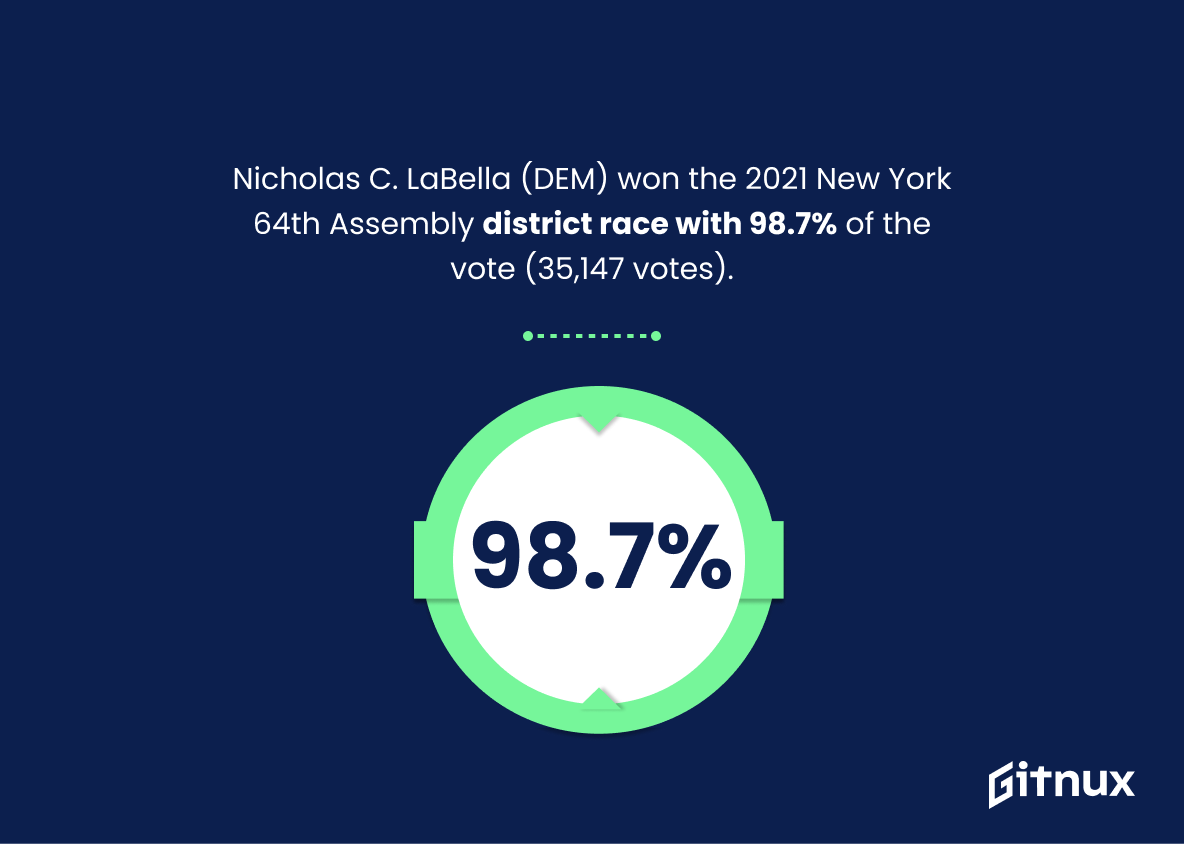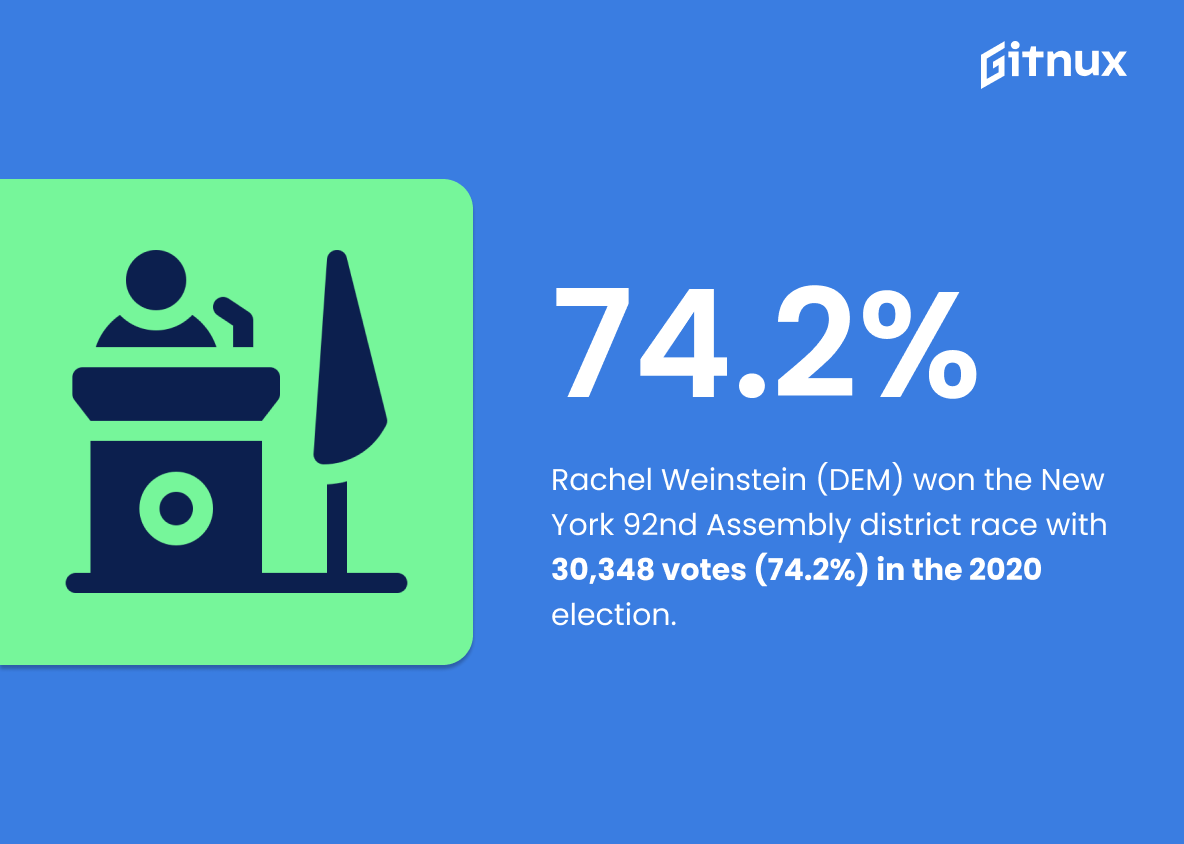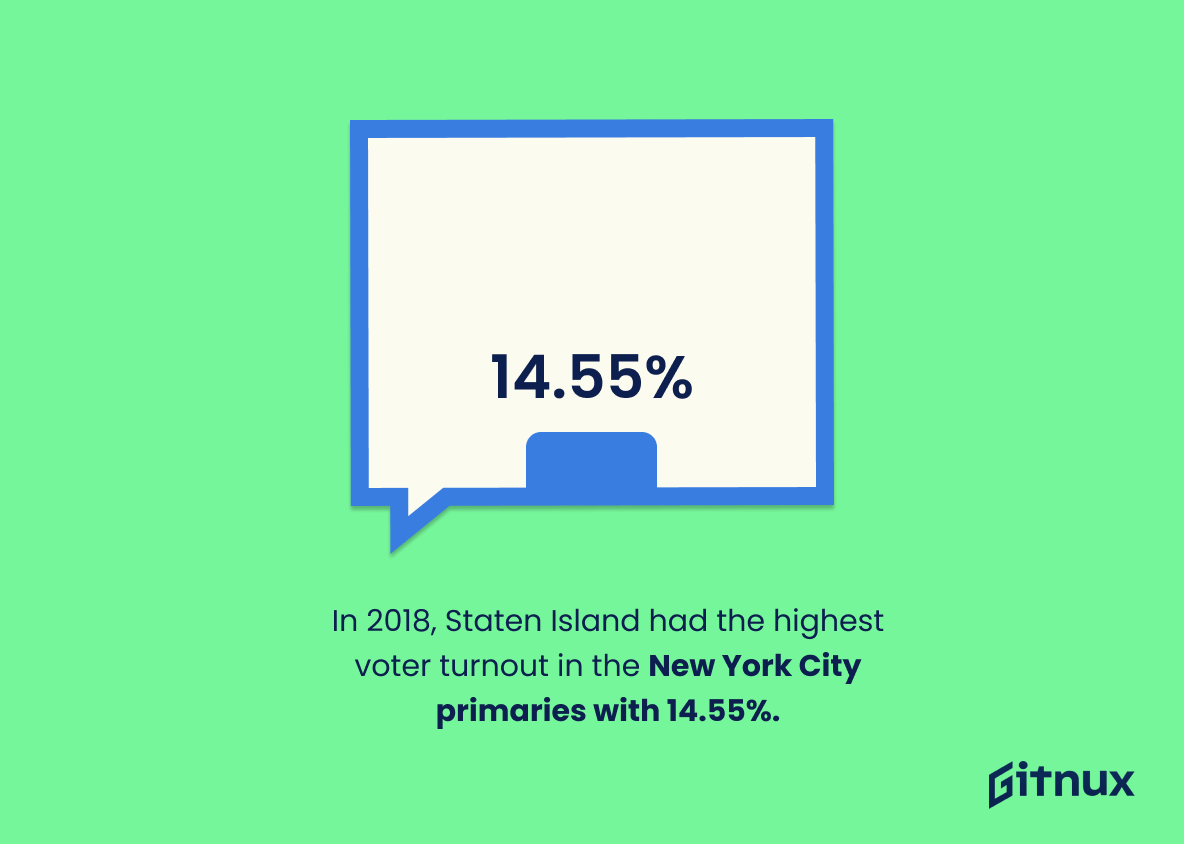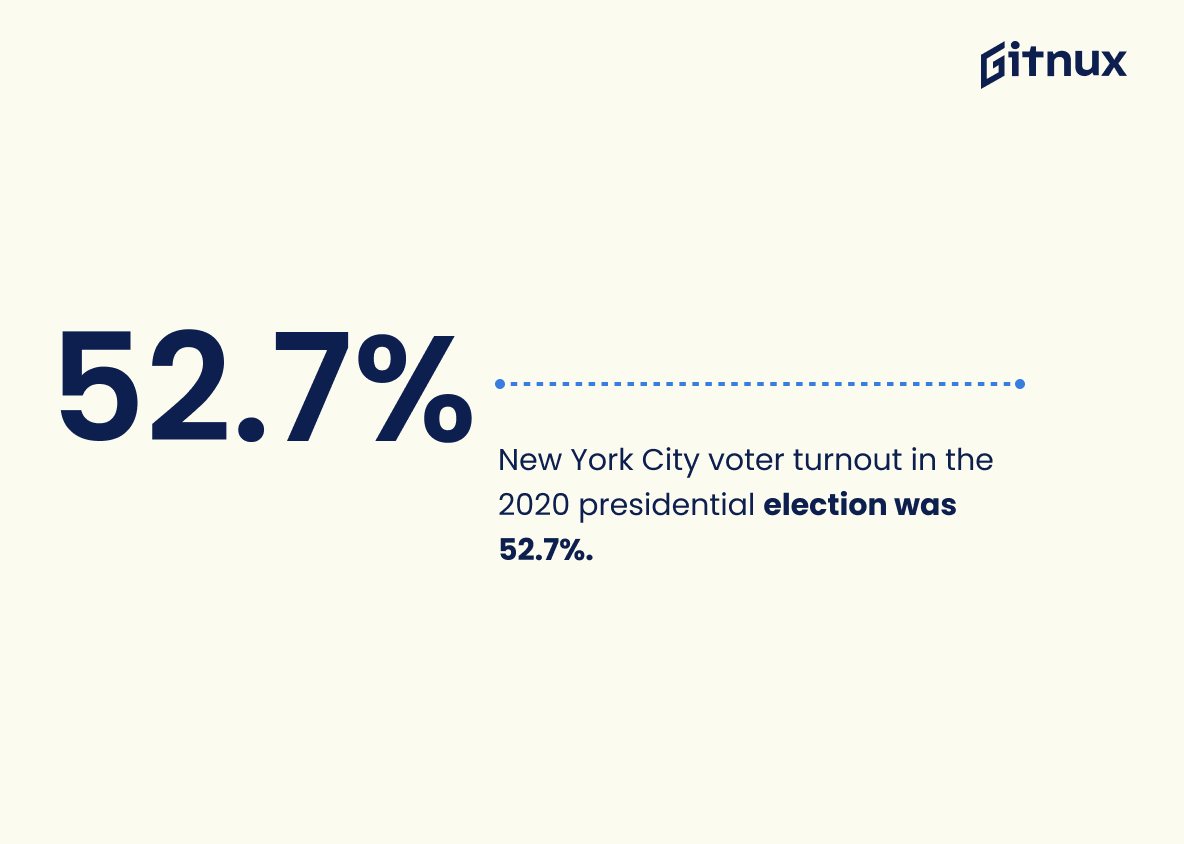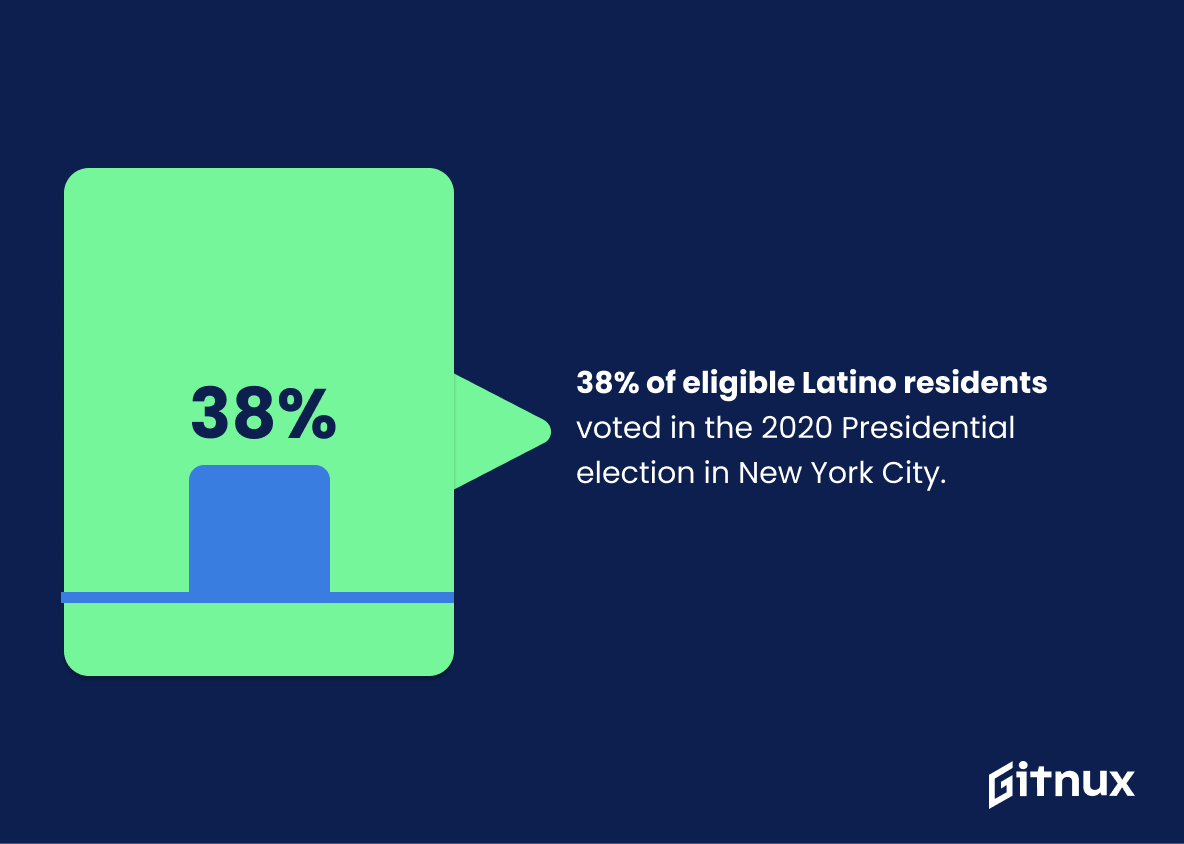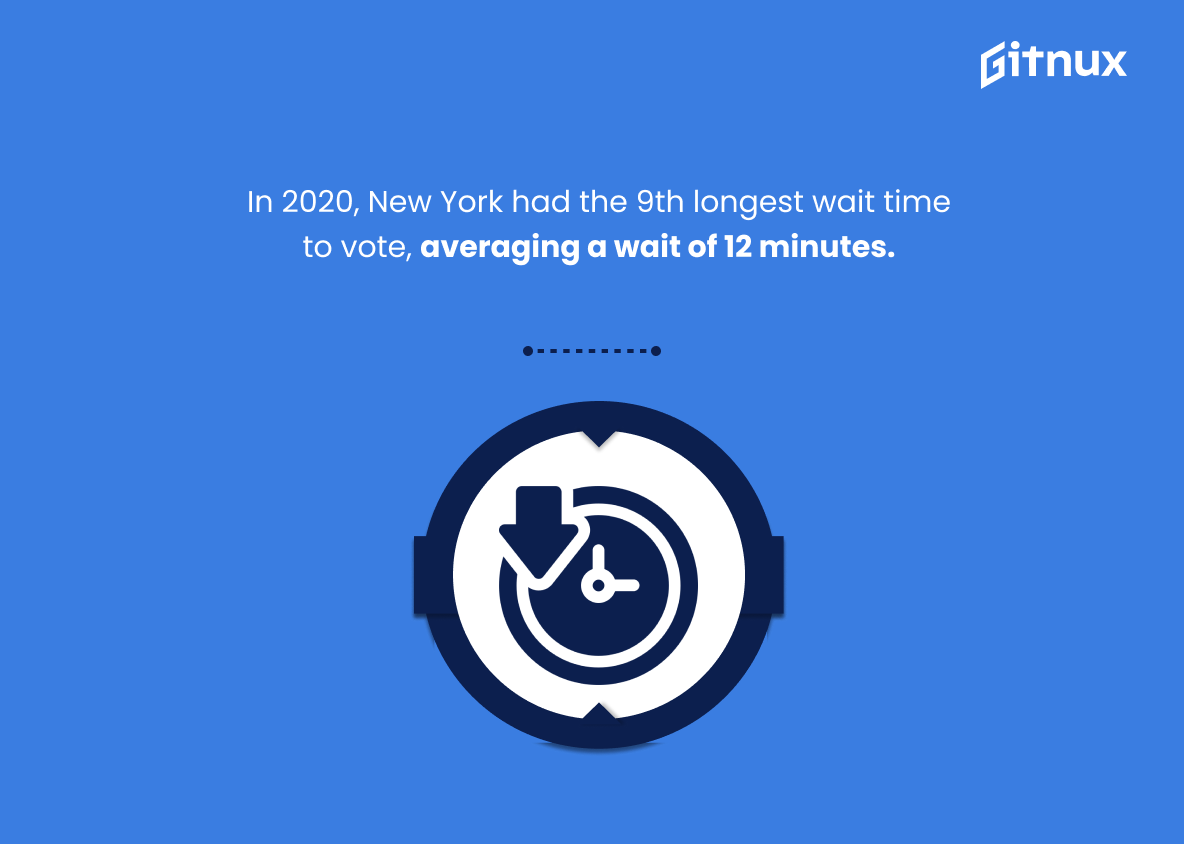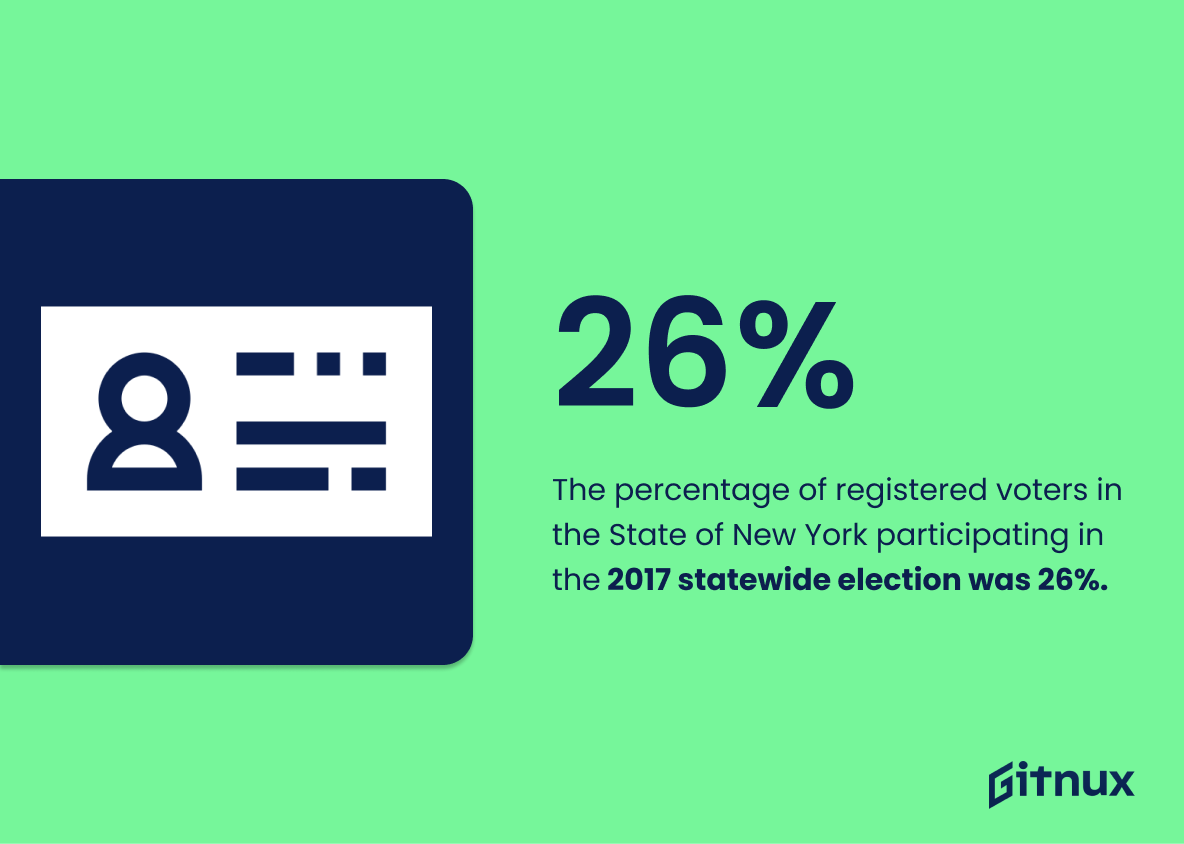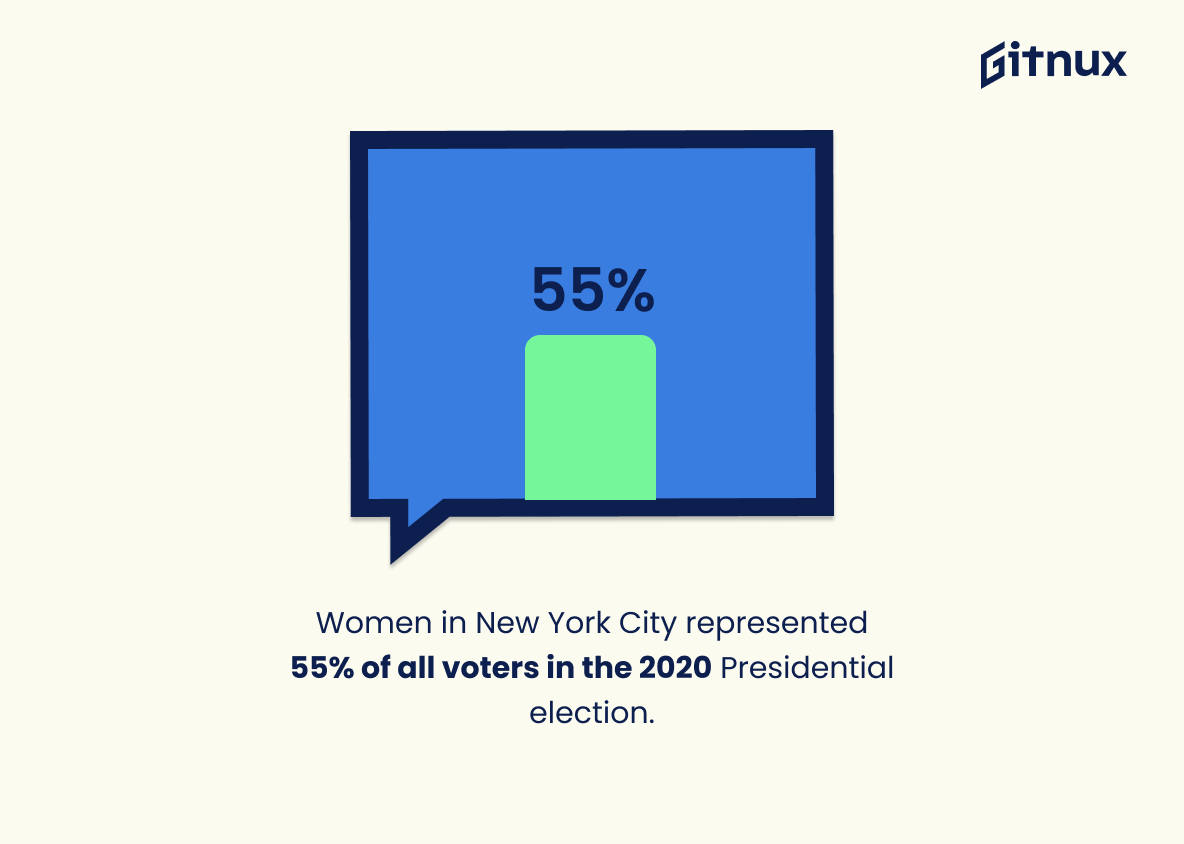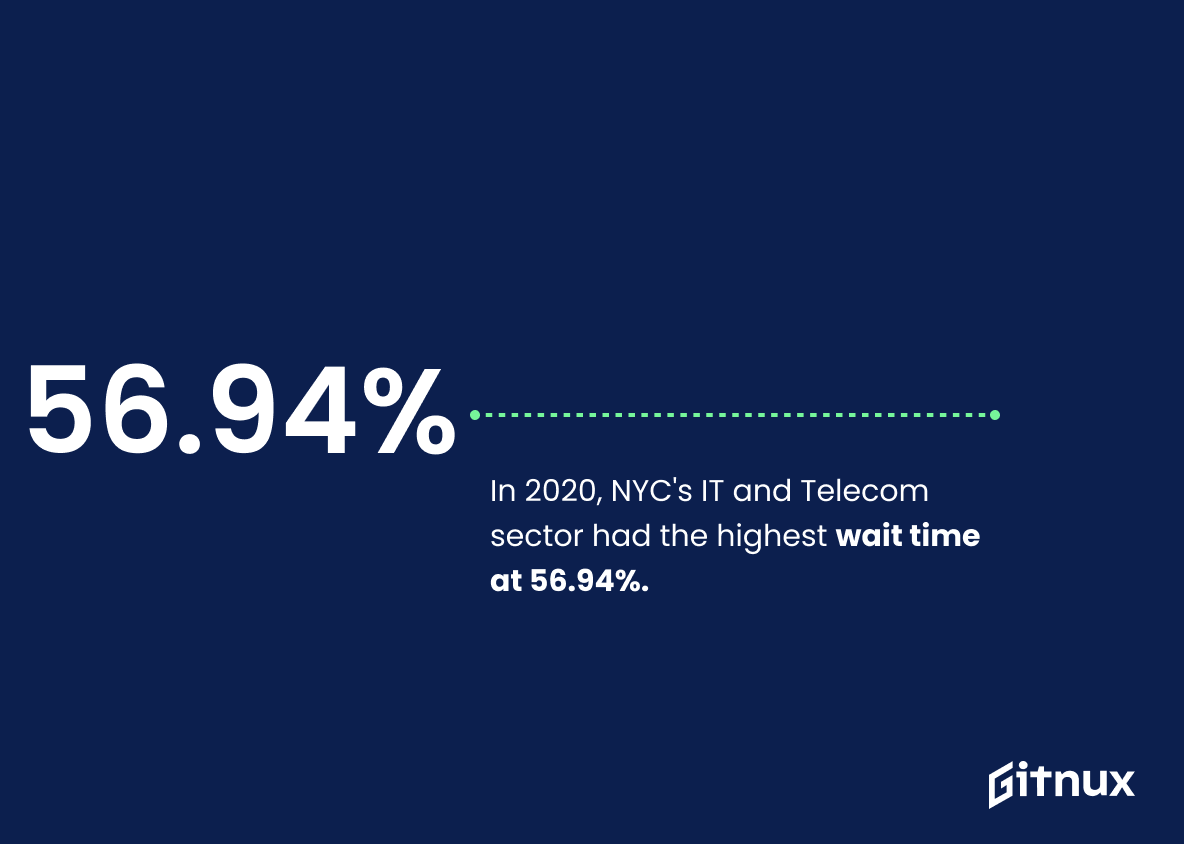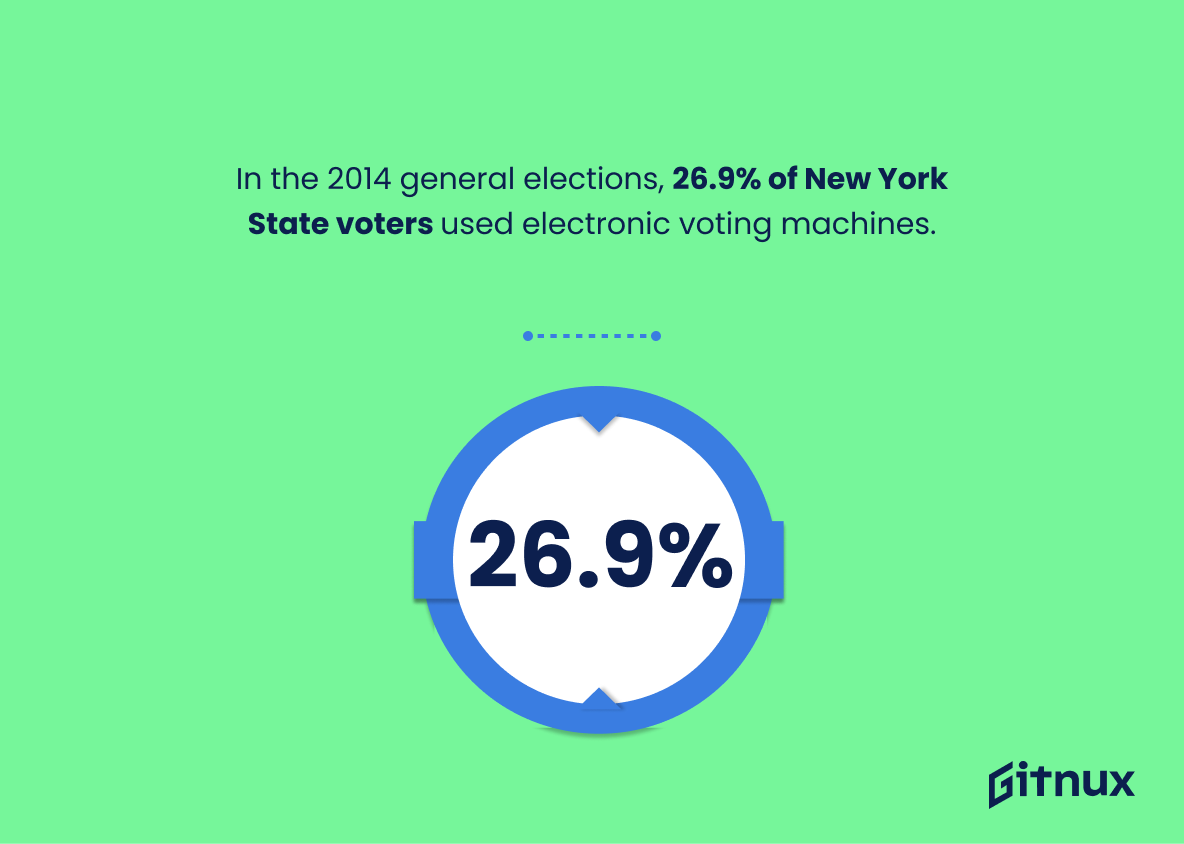Voting is an important part of our democracy, and New York State has a long history of strong voter participation. In this blog post, we will be exploring the voting statistics in New York over the past few years to gain insight into how citizens are engaging with their right to vote. We’ll look at data from presidential elections as well as local races, including turnout rates for different demographics and wait times at polling places. By examining these numbers closely, we can better understand what drives people to cast their ballots and make sure that everyone’s voice is heard in future elections.
This statistic is a testament to the power of New York’s electorate. It shows that the majority of eligible voters in the state took the time to make their voices heard in the 2020 Presidential election. This is an impressive feat, and it speaks to the importance of civic engagement in the state.
The percentage of registered voters in the New York State who participated in the 2018 midterm elections was 45.2%.
This statistic is a telling indication of the level of engagement New York State citizens have in the electoral process. It speaks to the importance of voting and the impact it can have on the outcome of elections. It also serves as a reminder of the power of the people to shape the future of their state and country.
New York Voting Statistics Overview
In the 2016 Presidential election, 57.3% of New York’s eligible voters cast ballots.
This statistic is a testament to the importance of voting in New York. It shows that a majority of eligible voters in the state took the time to make their voices heard in the 2016 Presidential election. This is a powerful reminder of the power of the people and the importance of exercising our right to vote.
As of August 2021, there are over 13.5 million registered voters in New York State.
The sheer number of registered voters in New York State is a testament to the importance of voting in the state. With over 13.5 million people registered to cast their ballots, it is clear that New Yorkers take their civic duty seriously and are eager to have their voices heard. This statistic is a powerful reminder of the power of the people and the importance of exercising our right to vote.
In the 2020 general elections, 5,302,361 New Yorkers cast their vote through mail-in/absentee ballots.
This statistic is a powerful testament to the importance of mail-in/absentee voting in the 2020 general elections in New York. It shows that a significant portion of the state’s population was able to exercise their right to vote despite the challenges posed by the pandemic. This statistic is a reminder of the importance of making voting accessible to all citizens, regardless of their circumstances.
New York State ranks 14th in voter registration with 80.1% of eligible voters registered as of 2016.
This statistic is a telling indication of the state of New York’s voting system. It shows that while the state has a relatively high rate of voter registration, there is still room for improvement. This means that there is potential to increase voter turnout and engagement in the state, which could have a positive impact on the political landscape.
Nicholas C. LaBella (DEM) won the New York 64th Assembly district race with 35,147 votes (98.7%) in the 2021 election.
This statistic is a testament to the overwhelming support Nicholas C. LaBella (DEM) received in the 2021 election for the New York 64th Assembly district race. With 98.7% of the votes, it is clear that the people of the district have placed their trust in LaBella to represent them in the Assembly. This is a powerful indicator of the public’s confidence in LaBella and the Democratic Party.
Rachel Weinstein (DEM) won the New York 92nd Assembly district race with 30,348 votes (74.2%) in the 2020 election.
The fact that Rachel Weinstein (DEM) won the New York 92nd Assembly district race with 30,348 votes (74.2%) in the 2020 election is a testament to the power of the people’s voice. This overwhelming victory demonstrates the strength of the Democratic party in the district and the importance of voting in New York. It also serves as a reminder of the importance of staying informed and engaged in the political process.
In 2018, Staten Island had the highest voter turnout in the New York City primaries with 14.55%.
This statistic is significant in the context of New York Voting Statistics because it highlights the impressive level of civic engagement demonstrated by Staten Island residents in the 2018 primaries. It serves as a reminder of the importance of voting and the power of citizens to make their voices heard.
New York City voter turnout in the 2020 presidential election was 52.7%.
The 2020 presidential election in New York City saw a turnout of 52.7%, a statistic that speaks volumes about the importance of voting in the city. This impressive figure highlights the dedication of New York City residents to exercising their right to vote and making their voices heard. It is a testament to the power of civic engagement and the impact it can have on the political landscape.
38% of eligible Latino residents voted in the 2020 Presidential election in New York City.
This statistic is a powerful reminder of the importance of Latino voter participation in the 2020 Presidential election in New York City. It highlights the impact that Latino voters had on the election, and the importance of their voices in the political process. It also serves as a reminder of the need for continued efforts to ensure that all eligible voters have access to the polls and are able to exercise their right to vote.
In 2020, New York had the 9th longest wait time to vote, averaging a wait of 12 minutes.
This statistic is a telling indication of the state of New York’s voting system. With an average wait time of 12 minutes, it is clear that the system is not as efficient as it could be. This could be a sign of inadequate resources or a lack of organization, both of which could lead to longer wait times and a decrease in voter turnout. This statistic is a reminder that New York needs to take steps to ensure that its voting system is as efficient and accessible as possible.
The percentage of registered voters in the State of New York participating in the 2017 statewide election was 26%.
This statistic is a telling indication of the level of engagement New Yorkers have in the electoral process. It speaks to the level of interest and enthusiasm citizens have in the democratic process and the importance they place on their right to vote. It is a reflection of the state’s commitment to democracy and the value its citizens place on their right to have their voices heard.
Women in New York City represented 55% of all voters in the 2020 Presidential election.
This statistic is a powerful reminder of the importance of female voices in the political process. It highlights the impact that women have had in the 2020 Presidential election in New York City, and serves as a reminder of the importance of ensuring that women are represented in the voting process. It also speaks to the power of female voters in the city, and the importance of their voices in the political process.
In 2020, Information Technology and Telecommunication in New York City experienced the highest poll site wait time issues at 56.94%.
This statistic is a stark reminder of the challenges faced by New York City voters in the 2020 election. With over half of the poll sites experiencing wait time issues, it is clear that the city’s voting infrastructure was not adequately prepared to handle the influx of voters. This statistic serves as a warning that more must be done to ensure that all citizens have access to a fair and efficient voting process.
The number of polling places in New York State increased by 28% from 2016 to 2020.
This statistic is a testament to the importance of voting in New York State. The 28% increase in polling places shows that the state is taking steps to ensure that all citizens have access to the polls and can exercise their right to vote. This is a positive sign for democracy in New York and a reminder of the importance of voting in the state.
In the 2014 general elections, 26.9% of voters in New York State cast their ballot through the use of electronic voting machines.
This statistic is significant in the context of New York Voting Statistics because it highlights the increasing prevalence of electronic voting machines in the state. It demonstrates that a large portion of New York voters are taking advantage of the convenience and accuracy of electronic voting machines, which could have a major impact on the outcome of elections.
As of August 2021, there are 6,542,719 registered Democrats and 2,895,049 registered Republicans in New York State.
This statistic is a powerful indicator of the political landscape in New York State. It shows that the majority of registered voters in the state are Democrats, which could have a significant impact on the outcome of elections. This could be especially important in a blog post about New York voting statistics, as it provides a clear picture of the political leanings of the state’s electorate.
In the 2013 New York City mayoral election, Bill de Blasio (DEM) won with 73.3% of the votes.
This statistic is a powerful indicator of the overwhelming support for Bill de Blasio in the 2013 New York City mayoral election. It demonstrates the clear preference of the people of New York City for de Blasio and his Democratic platform. This result is significant in the context of New York voting statistics, as it shows the strength of the Democratic party in the city and the willingness of the people to support their chosen candidate.
In the Democratic primary for the 2021 New York City mayoral election, Eric Adams won with 31.2% of the votes.
This statistic is significant in the context of New York Voting Statistics because it demonstrates the power of the people’s voice in the 2021 New York City mayoral election. Eric Adams won with 31.2% of the votes, showing that the people of New York City have spoken and chosen their leader. This statistic is a testament to the power of democracy and the importance of voting.
Conclusion
New York State has seen a steady increase in voter turnout over the past few years, with 61.8% of eligible voters casting their ballots in the 2020 Presidential election and 45.2% participating in the 2018 midterm elections. This is likely due to an increased number of polling places (up 28%) as well as more registered voters than ever before (over 13.5 million). Mail-in/absentee voting also saw a significant surge this year, with 5,302,361 New Yorkers taking advantage of it for the general elections – nearly double that from 2016’s 2,764,945 votes cast by mail-in ballot or absentee ballot application received prior to Election Day.
The state ranks 14th nationally when it comes to voter registration at 80%, while Staten Island had the highest primary turnout rate among NYC boroughs at 14%. Women represented 55% of all voters during last year’s presidential election and 38% of eligible Latino residents voted overall – both higher numbers compared to previous years’ statistics. Additionally, electronic voting machines were used by 26.9 percent of those who participated in 2014 statewide elections; however there was still some difficulty experienced at certain poll sites such as Information Technology & Telecommunication which reported wait time issues up 56%.
Overall these figures demonstrate how important civic engagement is within New York State and its citizens are increasingly exercising their right to vote each passing year regardless if they’re Democrats or Republicans – evidenced by Bill de Blasio winning 73 %of votes back 2013 mayoral race followed Eric Adams securing 31 %during 2021 primaries .
References
0. – https://www.www.census.gov
1. – https://www.www.pewtrusts.org
2. – https://www.www.pewresearch.org
3. – https://www.www.nyccfb.info
4. – https://www.ballotpedia.org
5. – https://www.www.nytimes.com
6. – https://www.elections.mit.edu
7. – https://www.www.cityandstateny.com
8. – https://www.www.elections.ny.gov
9. – https://www.nces.ed.gov
